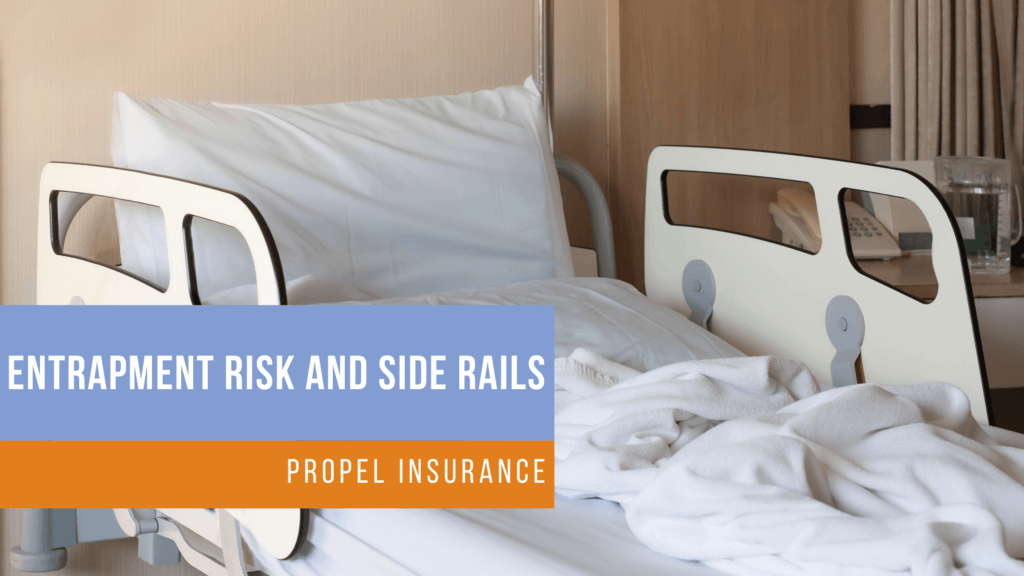Propel provides innovative insurance solutions to thousands of companies across the country. We make it our business to know your world inside and out.
Claims & Risk Management, Insights, Senior Care
Entrapment Risk And Side Rails
Entrapment risk is present in every level of care, even in the home setting. Basically, any time a rail or bar is attached to the bed frame or placed under the mattress, or near the bed frame or mattress, the risk of entrapment is present. The level of risk varies based on the device utilized, the entrapment zones present and the resident’s age, size, physical strength and cognitive status.
There are many misconceptions regarding side rails as assistive devices or protection and unfortunately side rail usage can result in serious injury and even death. Looking at some misconceptions, statistics, resulting litigation and regulatory risk related to entrapment will offer insight and identify opportunities to improve bed safety, reduce entrapment and mitigate the risk.
Misconceptions
- Side rails keep residents safe
- Side rails prevent falls
- Side rails should be placed automatically at the resident’s or family’s request
- Only full side rails present an entrapment risk
- Only full side rails are considered a restraint
- Assist bars do not create a risk of entrapment
Statistics
- 531 deaths related to side rails incidents were reported to the FDA (U.S. Food and Drug Administration) between 1985 and 2013
- 155 deaths related to side rails were reported to CPSC (Consumer Product Safety Commission) between January 2003 and September 2012:
- 25 in nursing homes
- 15 in assisted living facilities
- 93% of the fatalities were related to entrapment
- 36,900 people required transfer to emergency care due to adult portable bed rail incidents between 2003 and 2011
Litigation Risk
When an entrapment occurs, this validates the side rail(s) created a hazard. Side rail hazards are considered “well known” as the hazards have been recognized by the FDA, CPSC, CMS and state surveyors. During litigation a death or significant injury related to a “known” hazard is amplified and presented as negligence; this strategy is utilized to increase the value of the claim.
“You knew about the risk – you should have prevented the incident.”
If regulatory citations related to entrapment and/or side rail usage have been cited, especially if citations were issued in response to the actual event, this has the potential to significantly increase the value of the claim and makes defending the case more challenging.
Claim value also has the potential to increase with deaths that occur during the use of a well-known “bad” bed design, a “bad” rail/bed/mattress combination (bed system) or an older bed or side rail that should have been replaced.
Graphic illustrations and photographs depicting entrapment scenarios are readily available on web searches and photographs are usually taken by authoritative investigators at the time of event, both have the potential to add shock value for allegation resulting in a claim.
Potential allegations related to side rail usage include:
- Failure to justify the use of a bedrail (negligence)
- Failure to correctly install creating a safety hazard
- Failure to adequately supervise the use of the bedrail
- Failure to discover resident in time to prevent injury/death related to entrapment
- Lack of observation related to side rail usage
Regulatory Risk
Over the past three (3) years, 92 nursing homes have been cited at the Immediate Jeopardy scope and severity related to side rails risks and/or hazards according to Propublica:
- 53 – “J” Isolated
- 32 – “K” Pattern
- 7 – “L” Widespread
Regulatory verbiage in associated statement of deficiencies included:
- Failed to assess for entrapment risks including impaired muscle strength, increased agitation, loss of dignity, falls, and entrapment resulting in pain, bruising, fractures, strangulation, hanging or death
- Observations (by surveyors) of residents with extremities trapped within side rail openings
- Falls with significant injury contributed to residents climbing over or attempting to go around raised side rails
Although there are no federal standards for the assisted living level of care there is still the potential for regulatory citations at the state level related to resident safety.
Risk Mitigation
Entrapment risk and side rail safety should be assessed prior to placing side rails or any added device even at the resident or family request. It is imperative to acknowledge there is risk associated with rail usage regardless of the size, type or number of rail(s) including assist bars and even “stick” or “lollipop” style handrails or grab bars.
The risk and benefits of side rails for the individual resident should be identified and discussed within the interdisciplinary team (IDT) as well as with the resident and resident representative. Prior to placing side rails, it should be evident that the benefits of the rail(s) outweigh the risks. Written consent should be obtained from the resident and/or resident representative. Development of a negotiated/shared risk agreement should also be considered; the negotiated/shared risk agreement should include the risk of serious injury including possibility of death from entrapment.
Additional recommendations regarding side rail usage are available in the FDA document below:
https://www.fda.gov/medical-devices/bed-rail-safety/recommendations-health-care- providers-about-bed-rails
Careful consideration should be given to type of device that will be utilized prior to purchasing. Side rails including assist rails should be compatible with the bed system in place; only rails compatible with the bed system should be placed.
Best practice is to not permit portable side rails.
Systems should be in place to verify all entrapment zones created by the bed system (bed, mattress, rails) are within FDA guidelines. It is vital to note different bed systems, different combinations of beds, mattresses and side or assist rail(s) create different entrapment zones; all entrapment zones recognized by the FDA may not be present based on the combination.
Best practice is to follow manufacturer’s recommendations regarding what combinations are permitted for the specific bed system. Side rails are not manufactured to be interchangeable among different bed systems and should not be altered to fit.
Entrapment zones should be verified prior to putting the bed or bed system into use and verified each time a different resident utilizes the bed system. There should also be a system to re-verify entrapment zones as mattress compressibility will change over time and there is the potential for the resident’s status to change. This should also drive review and replacement of mattresses based on manufacturer’s recommendations and mattress compromise based on wear and tear.
Entrapment zones and guidelines for zone opening are outlined in FDA’s “Hospital Bed System Dimensional and Assessment Guidance to Reduce Entrapment” that is included with this point from Propel.
Written protocols should drive processes that restrict third party providers such as hospice, therapy groups, or home health from placing side rails without permission from the facility. Prior to placing side rails the provider should meet with the IDT, resident and family to discuss the risks and benefits for the individual resident and obtain written consent from the resident and/or family prior to placement.
Resident handbooks should clearly outline side rail protocols, list the risk and benefits of side rail usage and restrict families from bringing portable side rails into the facility. It should be noted families have sought litigation for incidents related to portable side rails the family brought into the facility. If bed systems utilized have pre-attached side rails, consider placing a statement in the resident handbook such as “Please do not raise the side rail on your loved one’s bed without checking with the nurse or caregiver.”
Regulatory Compliance
Regulatory guidance for the skilled level of care requires that alternatives to side rails be attempted prior to placing side rails; this is a best practice for the assisted living level of care as well.
The FDA lists the following alternatives to side rails:
- Roll guards
- Foam bumpers
- Lowering the bed
- Concave mattress
Skilled nursing facilities should review regulatory guidelines at F 700 – Bed Rails and
F 909 – Resident Beds to confirm policies and protocols align with the regulatory guidelines. F 604 – Respect and Dignity – should also be reviewed as abuse is frequently cross tagged in response to side rail citations and placement of side rails could inadvertently create a physical restraint for certain residents.
Side rail usage should also be considered when identifying fall risk. Prior to placing side rails for a resident at risk for falls careful consideration should be given as to whether or not the rails may inadvertently increase the risk of serious injury related to a fall should the resident attempt to go over or around the side rails to exit the bed.
Consider the device, consider the reason, and consider the risk


